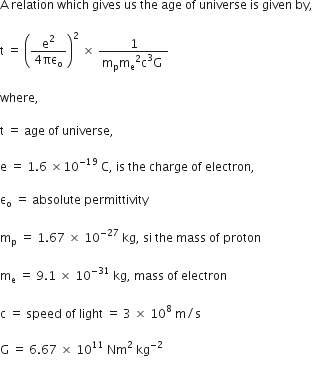A great physicist of this century (P.A.M. Dirac) loved playing with numerical values of
Fundamental constants of nature. This led him to an interesting observation. Dirac found that from the basic constants of atomic physics (c, e, mass of electron, mass of proton) and the gravitational constant G, he could arrive at a number with the dimension of time. Further, it was a very large number, its magnitude being close to the present estimate on the age of the universe (~15 billion years). From the table of fundamental constants in this book, try to see if you too can construct this number(or any other interesting number you can think of ). If its coincidence with the age of
the universe were significant, what would this imply for the constancy of fundamental
constant.



